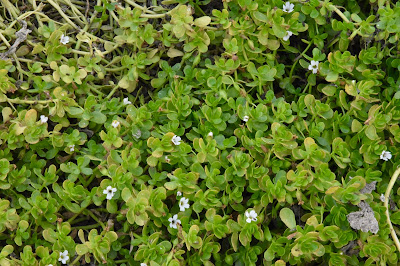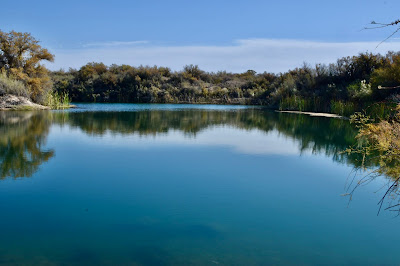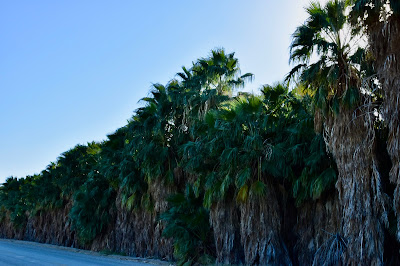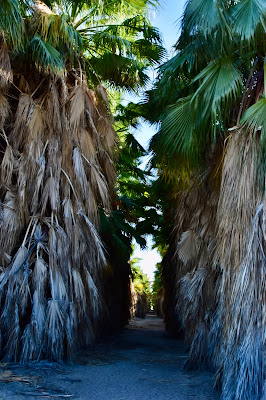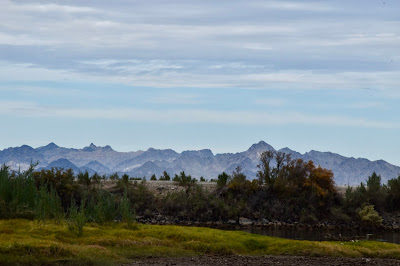Thanksgiving
As we are ensconced amidst a plethora of recreational vehicles on the shore of the Colorado River, I find myself resistant to writing. In itself, that is a most unusual circumstance; typically, putting fingers to keyboard is balm to whatever is urging me on, whether it be elation or angst.
The reticence to write was a result of rational thought at war with emotion. Being unable to make a decision between relating our experiences or sharing how I was feeling left me doing neither.
As always, that first step made the difference - I determined that telling one thing did not preclude the other; therefore, I began as usual with not the slightest idea what direction I was headed.
Ehrenberg, the Colorado, bees . . .
We had been to this region before and in fact at the same RV park, so it was an easy decision for an escape on Thanksgiving. Of course we cannot escape our grief over our son’s death, but we can utilize a change of scenery to mitigate the intensity, and that is what we are doing.
Being careful to remain on the Arizona side of the river, we tried out a few fishing spots and were rewarded by catching a few largemouth bass. It seems that there is more river access across the way (a grass is greener conjuring?), but our Arizona fishing licenses carry no authority there.
I find that my enthusiasm for everything has waned, yet we managed to do some interesting explorations along the Oxbow and Levee roads, quasi parallel dusty gravel routes following the river’s course.
The levee road grew tedious after a time with its monotony: a steep-sided slide down to the brush-choked water’s edge, but with little actual access. The lower Colorado appears placid in comparison to its canyon-churned white-water rapids further north, although its impressive width stealthily harbors a current I wouldn’t want to be caught in.
In a very few places, there are gaps in the levee where sandbars have created beaches and wide shallow sections of the river. Nice for camping perhaps, but fishing not so much.
A bizarre sight on a random roadside scrubby tamarisk caused me to call out for a back-up to discover what I had just spotted. Even at closer-than-completely comfortable range, the best I could discern was that the ovoid mass hanging on a branch was composed of a solid pack of bees. I presume that it was a swarm on its way to creating a new hive, but I had never seen one that small nor that perfectly shaped. The throng was about a foot high. Most of the insects were solidly packed in like sardines on top of more sardines with nearly no movement visible, and a few individuals were flying around outside the swarm.
I enjoyed the views far more when we found our way onto the Oxbow Road that wound serpentine-like to follow back channels that have been cut off from the river. Even there, the thickets often obscured views of the water and sometimes completely choked the channel.
In most places where a clearing allowed, there were people dry camping or homeless encampments set up. I was intrigued by every glimpse of the waterway, and happier still when we discovered a mostly unused cove to settle in for some fishing.
But first of course, I had to go on an explore. Meaning only to "just check over here", I found myself a goodly distance away wandering one way and then another, hiking and backtracking to find stream accesses as I admired the beauty of the place. My meanderings took me over parched sandy flats where desert vegetation required lots of route finding to get through. Those occasional openings to the oxbow channel were rendered more precious because of their scarcity.
This photo shows the hopelessness of getting through except where nature has provided openings.
Eventually, I surrendered to the realization that I had done a walk-about without informing the señor what I was intending. How could I have told him; I didn't know myself until I had been lured on for a substantial distance and time.
When all was said and done, I was certain that it was a perfect place to return with the kayaks. It is a wonderfully serene old river channel to explore by boat.
Cayuses, palms, Marias . . .
We were startled to spot a tiny herd of wild horses lined up to observe our passing as if they had expected a parade and we were a disappointing substitute. I wished I had something to feed them; they were in pretty poor condition. The graze prospects thereabouts are skimpy and less than nutritious.
Could not resist a halt to curb curiosity at an acreage where huge palms were packed cheek by jowl, rising up from otherwise laser-leveled hay and cotton fields.
Our conclusion that it was a long abandoned date palm orchard did nothing to satisfy a wondering about why anyone would cease to care for the seeming cash cow that it must have been. Do they age out? I am clueless.
The Big Maria Mountains in California as seen from our vantage point one state east of there: they are a really beautiful wildly rugged appearing range. I don't know where the Little Maria Mountains may be or even if there is a smaller counterpart. My pard wondered if there was not both a big and small range, but whether they were named for Big Maria, whoever she may be.











